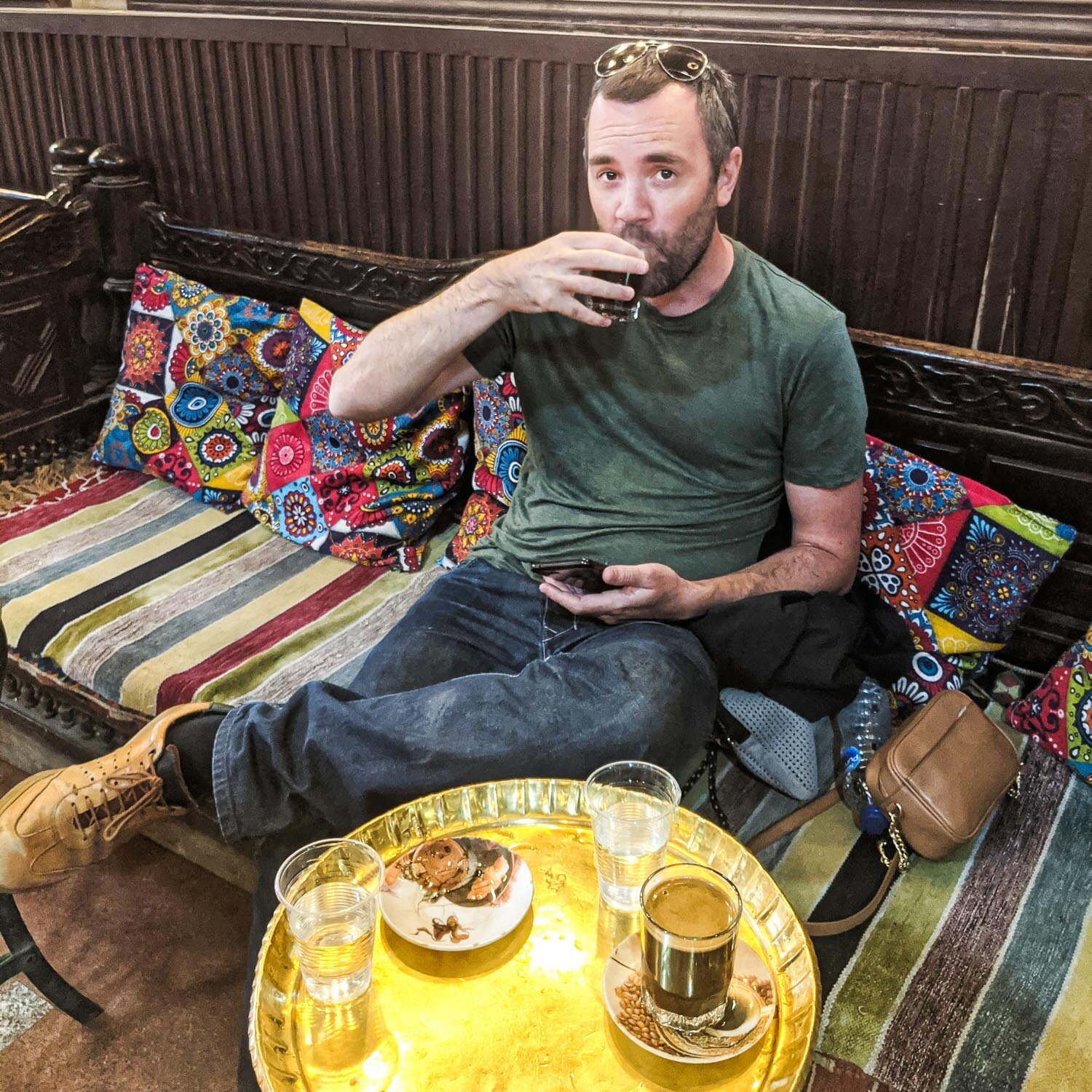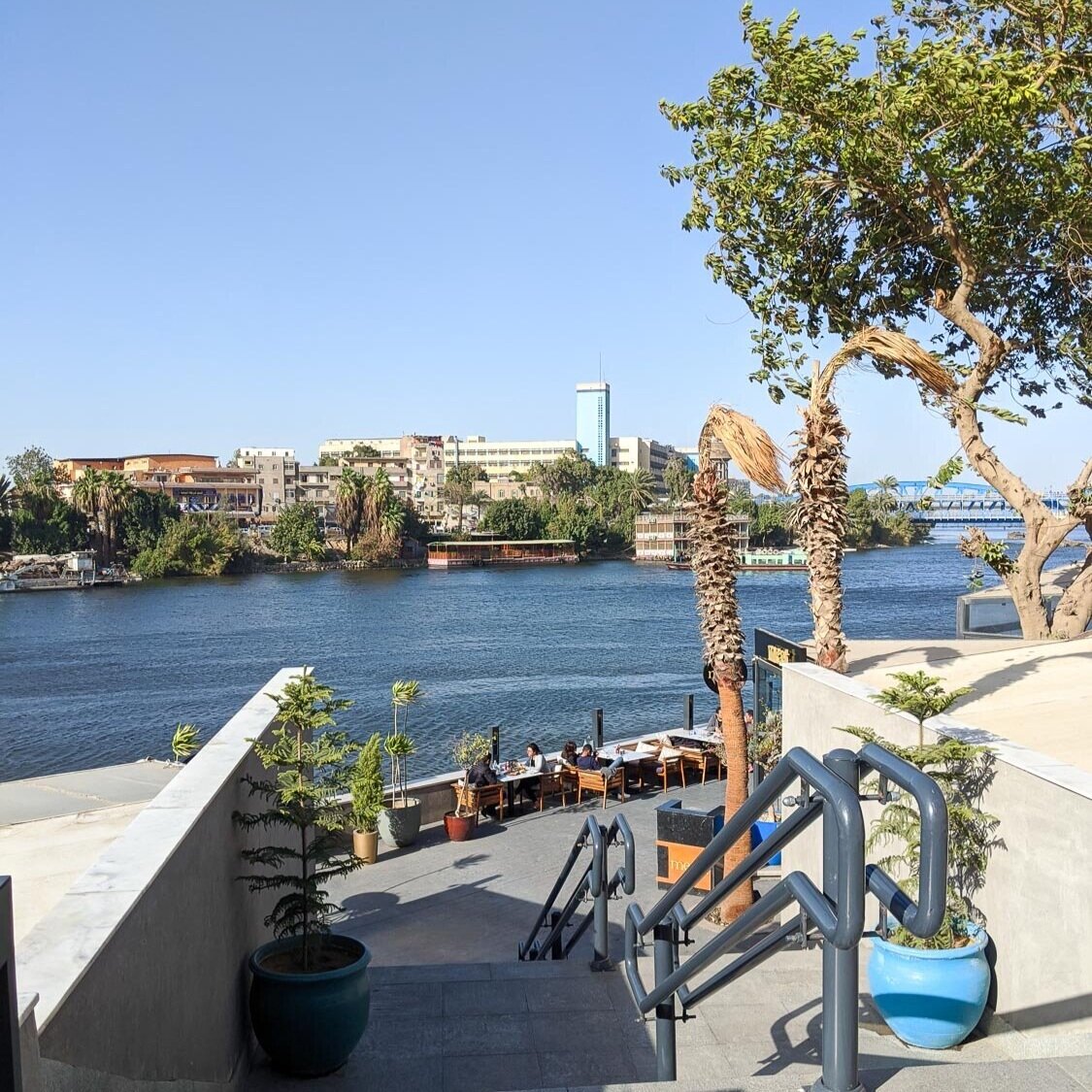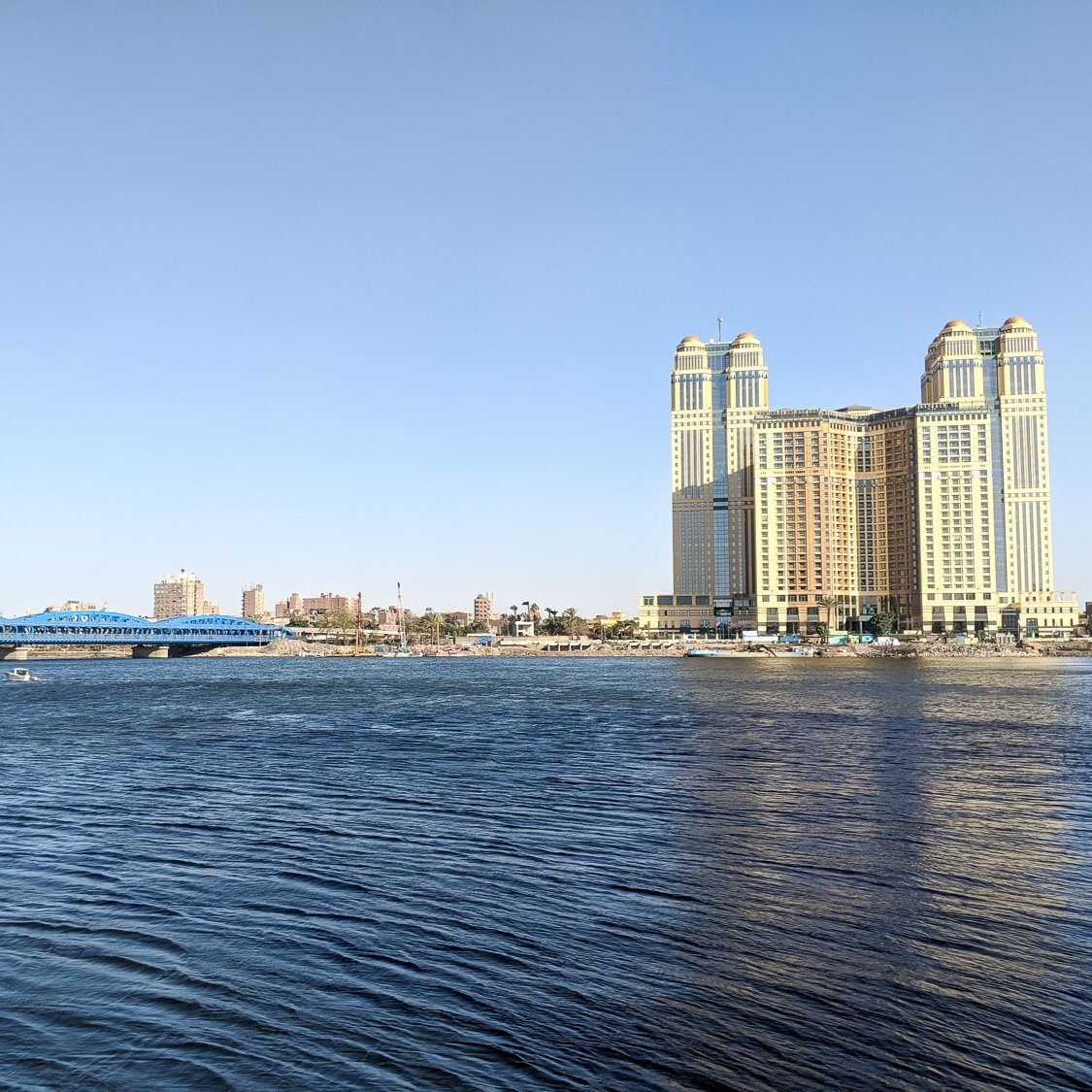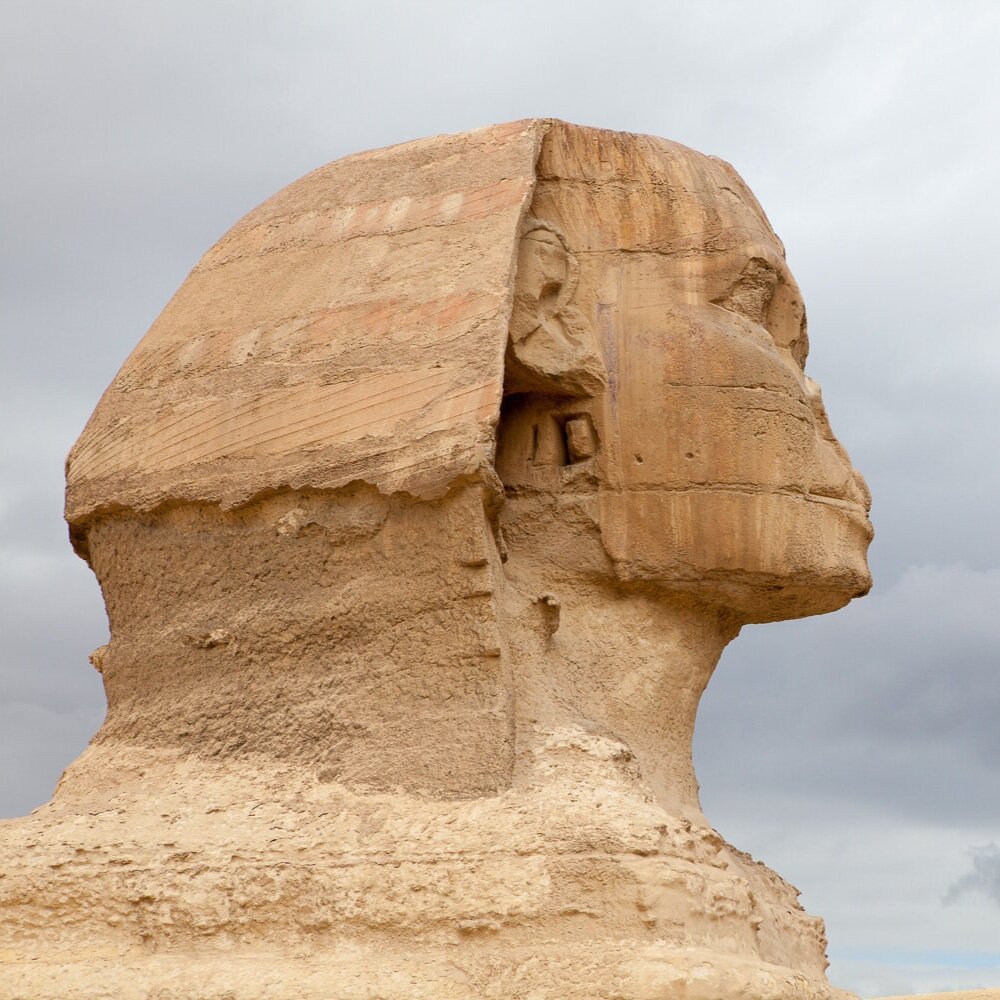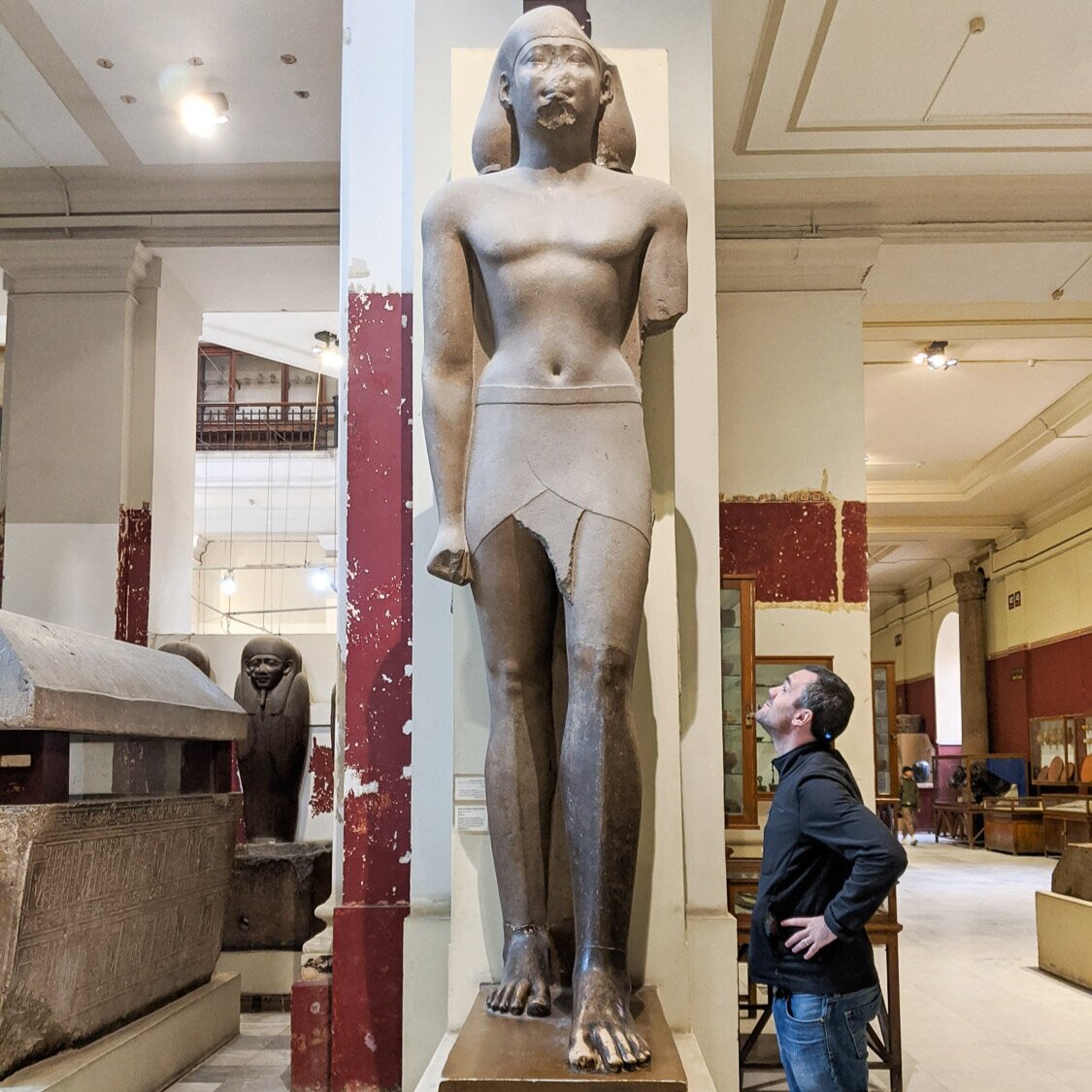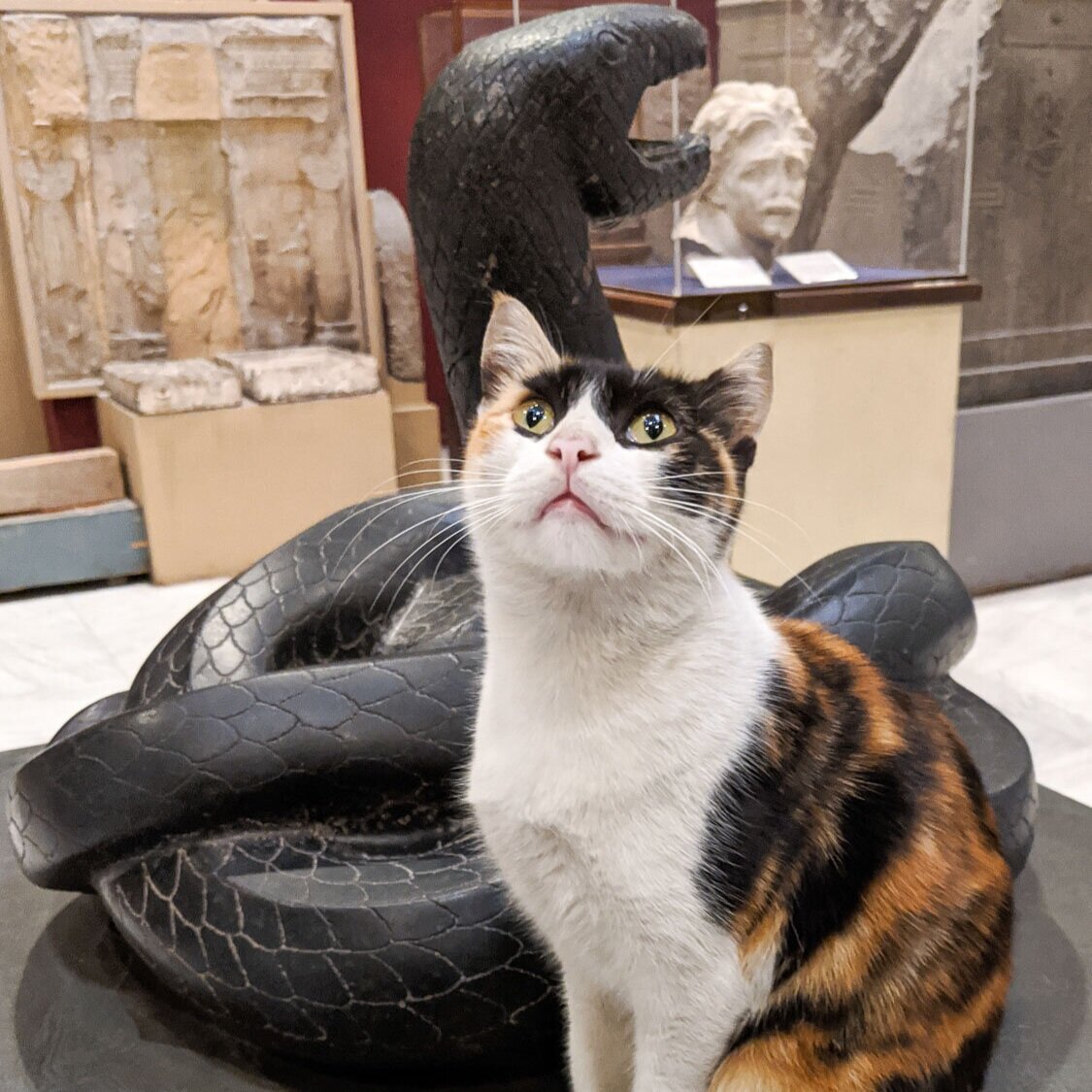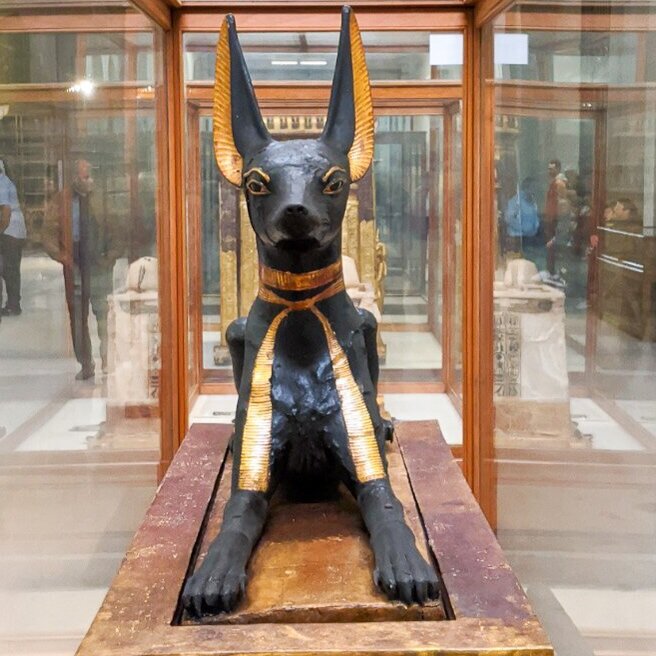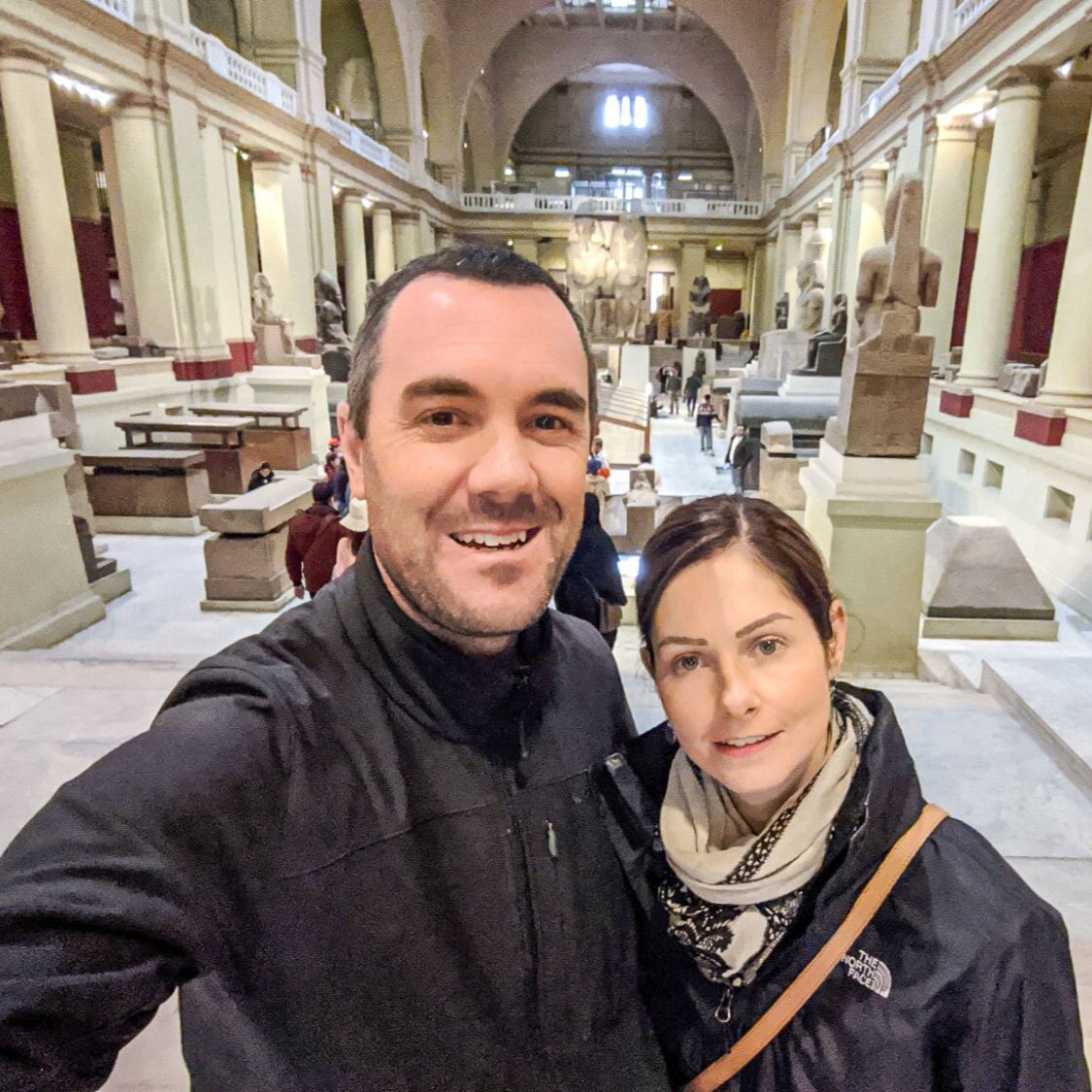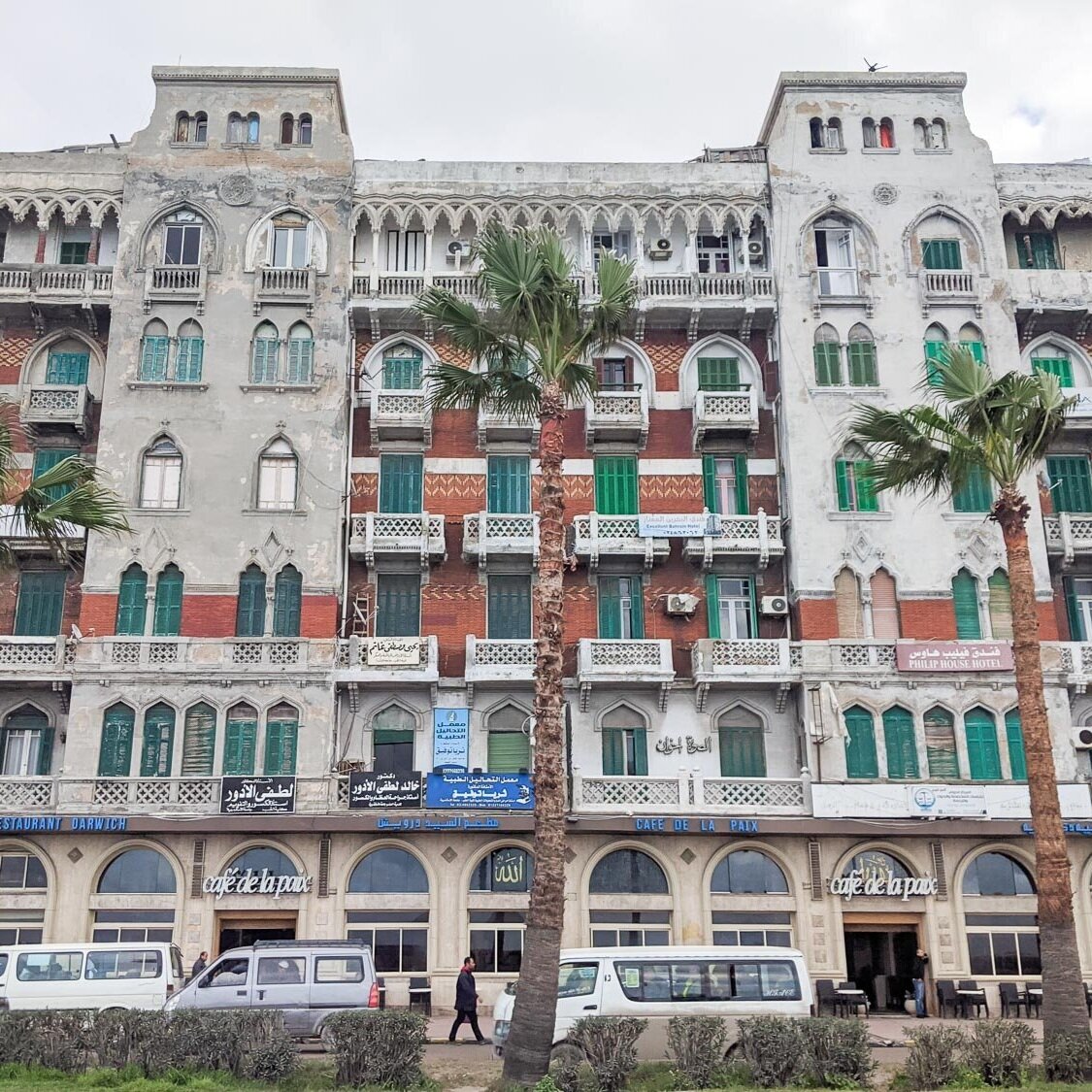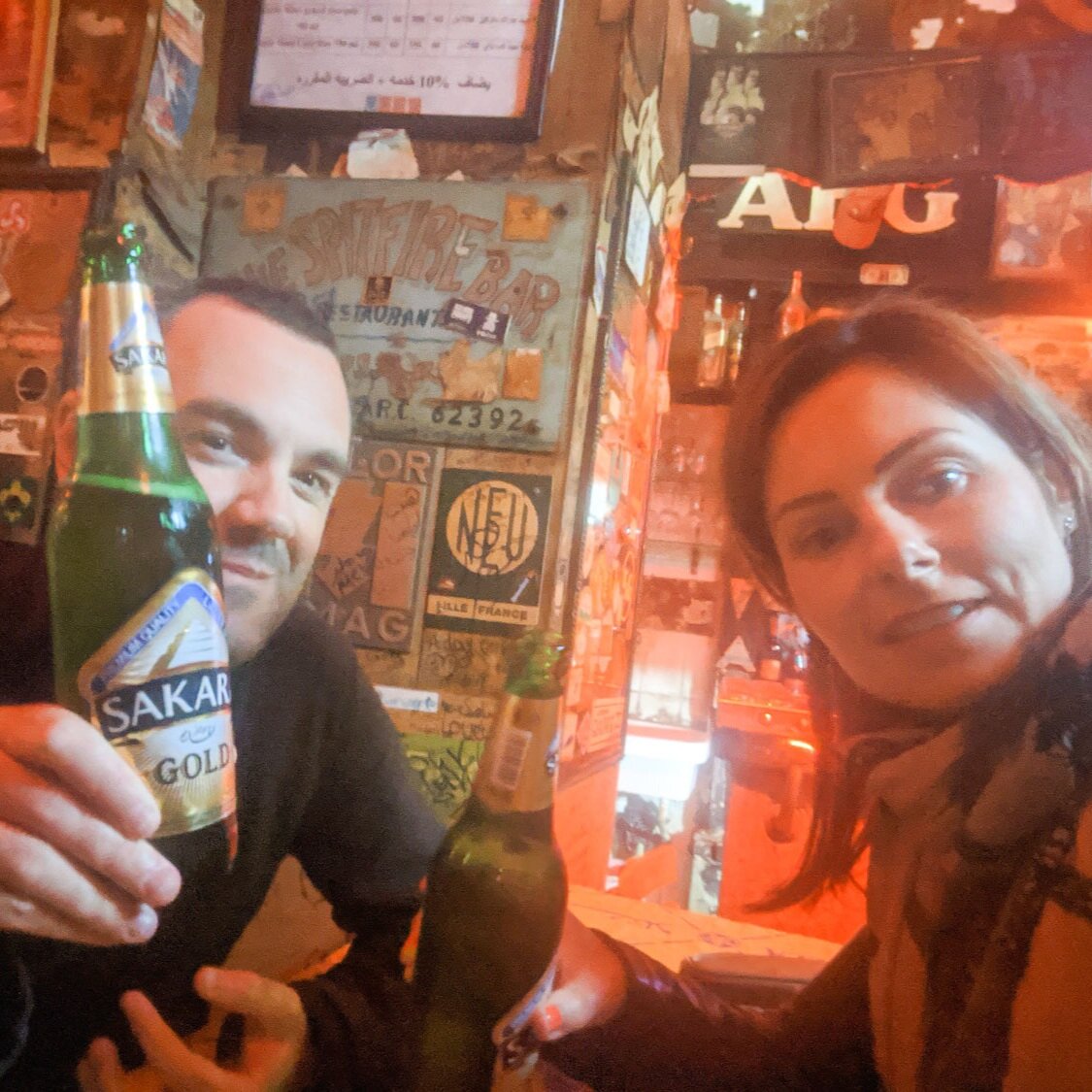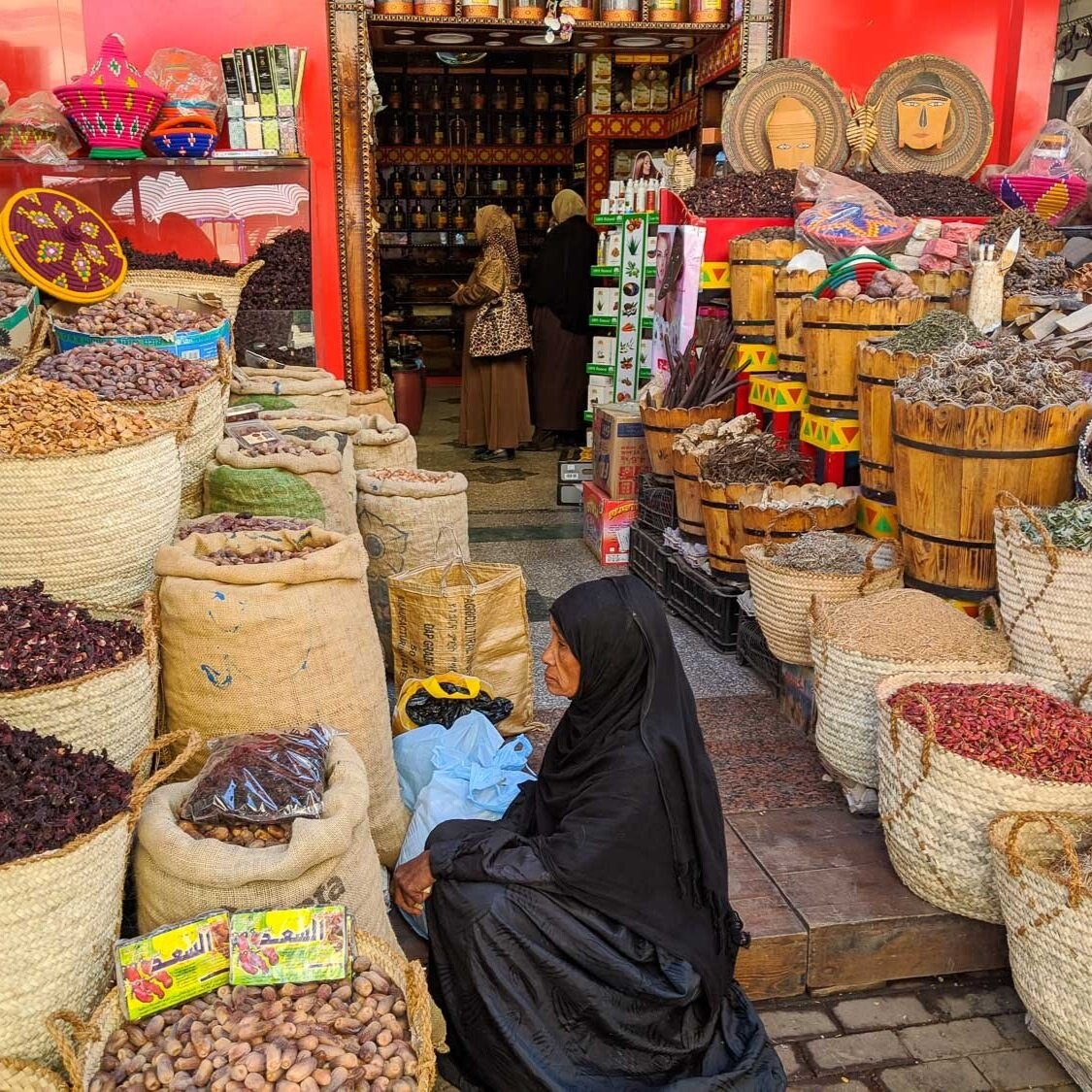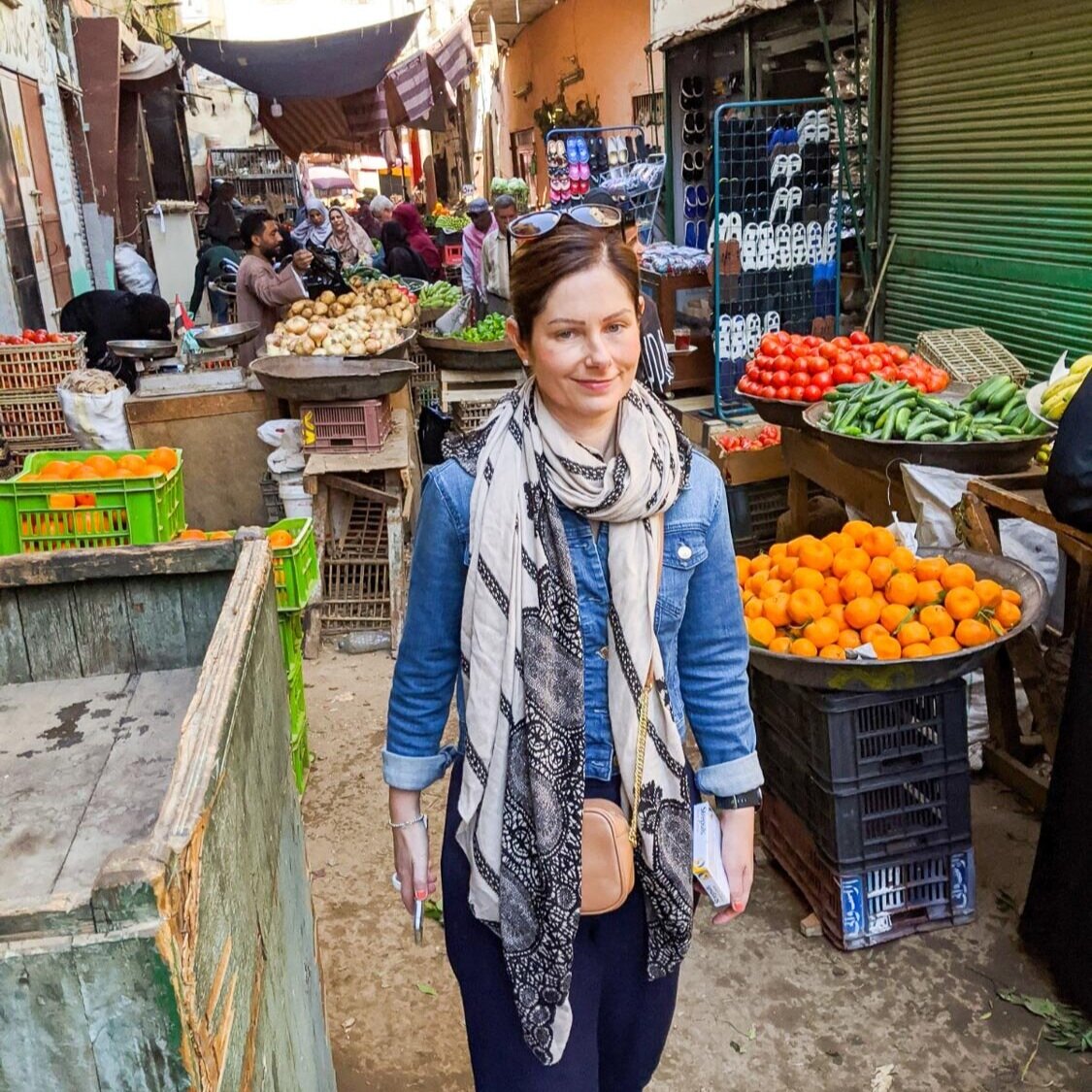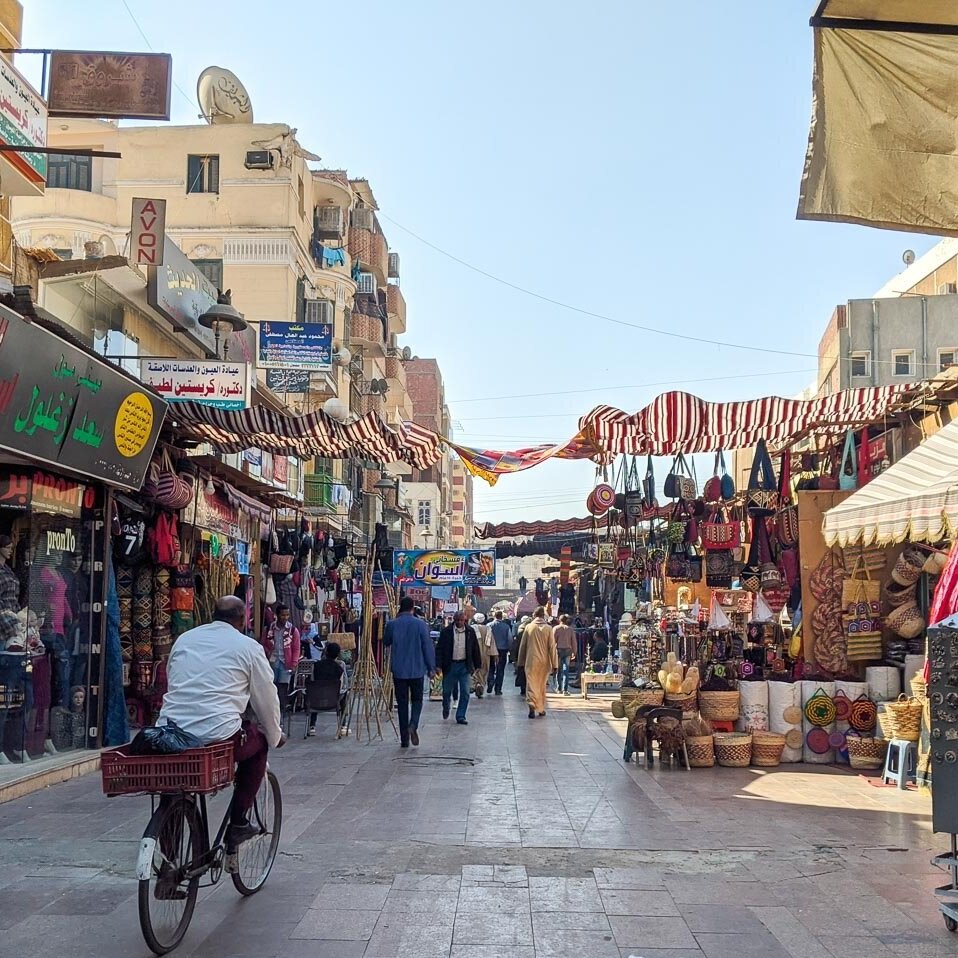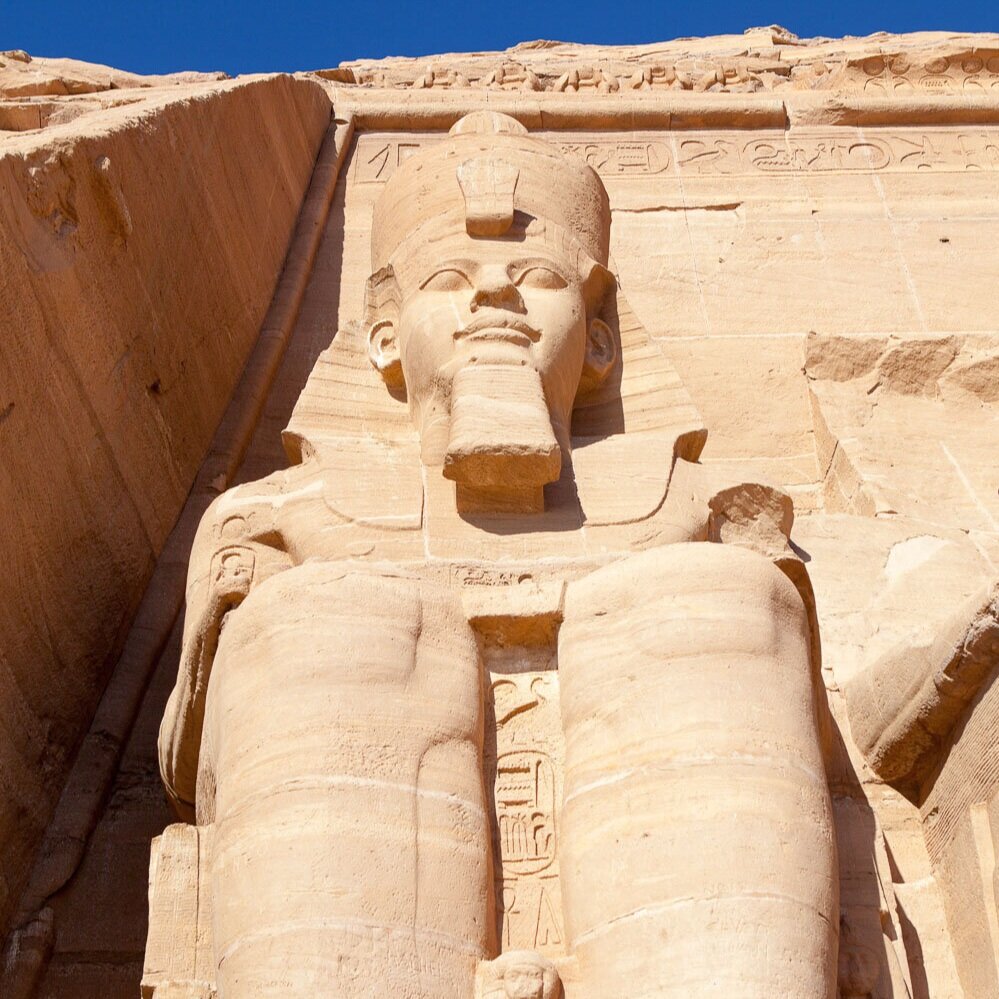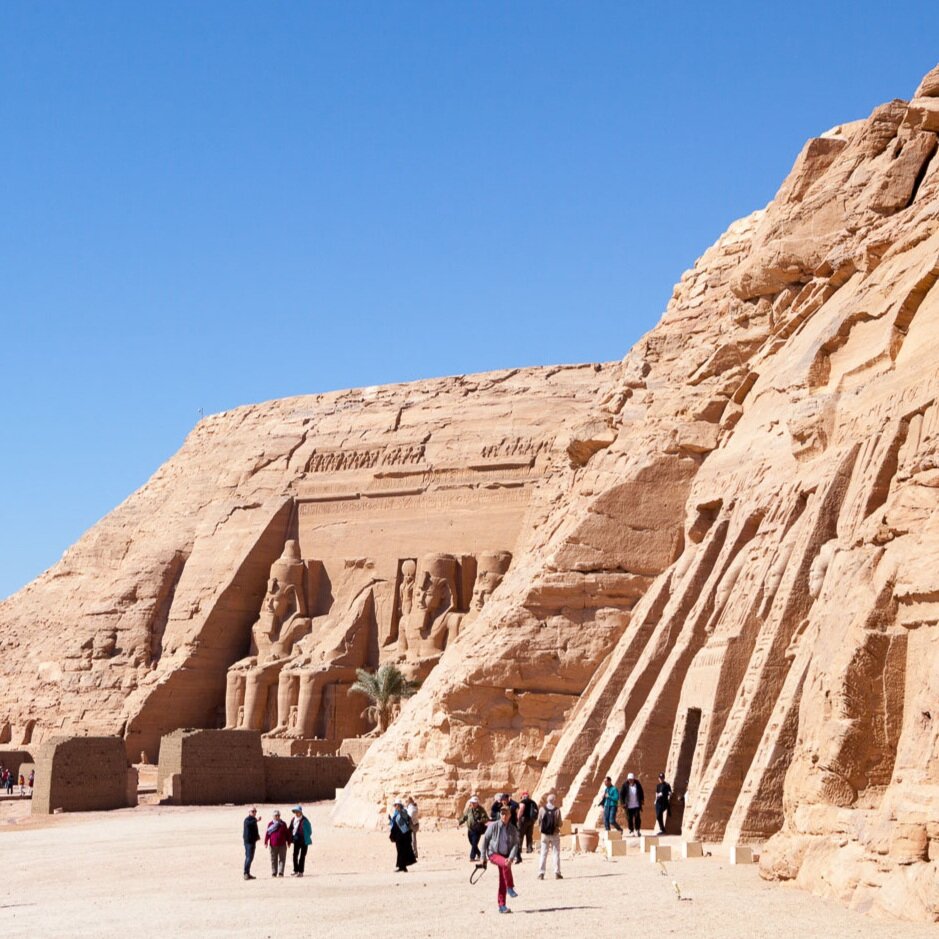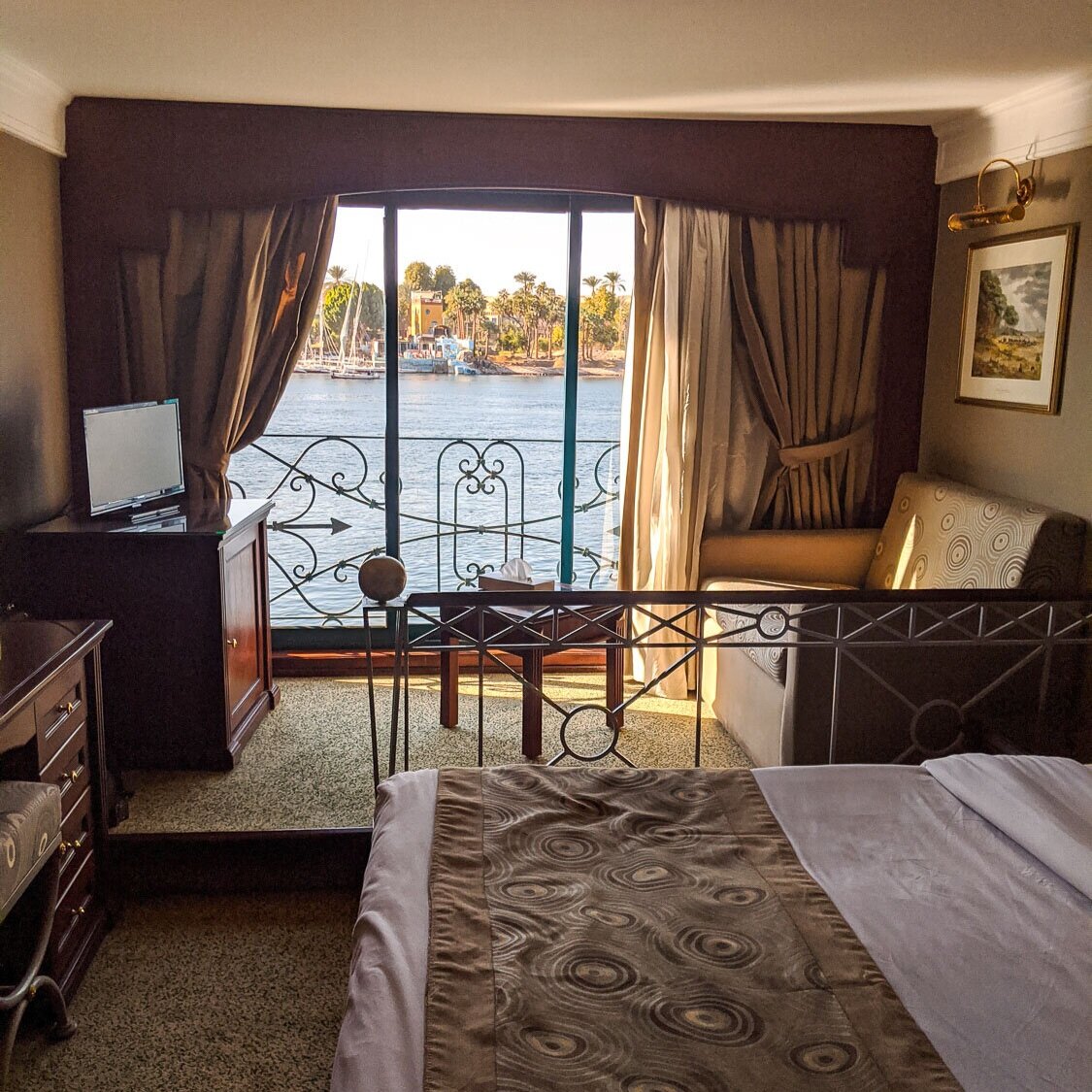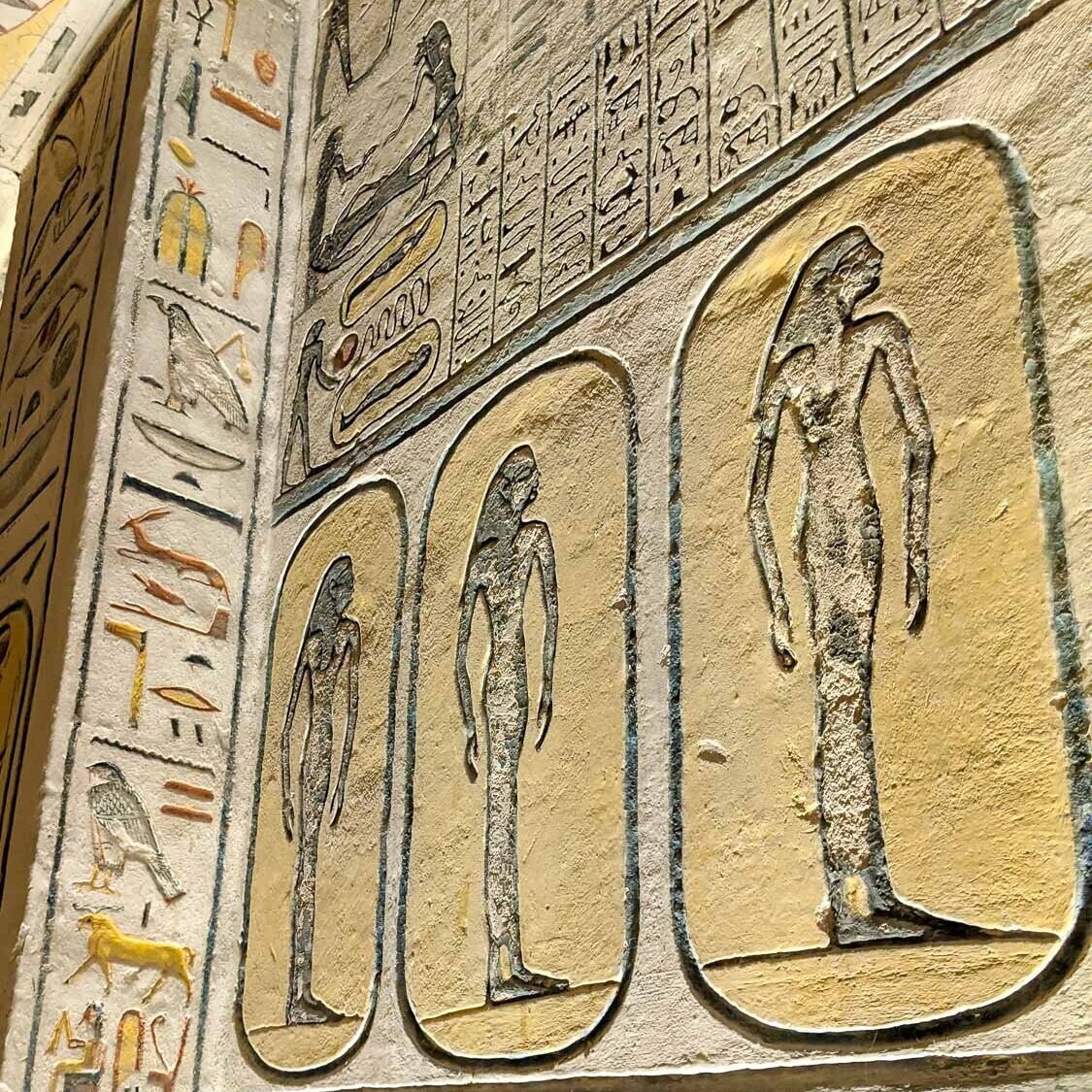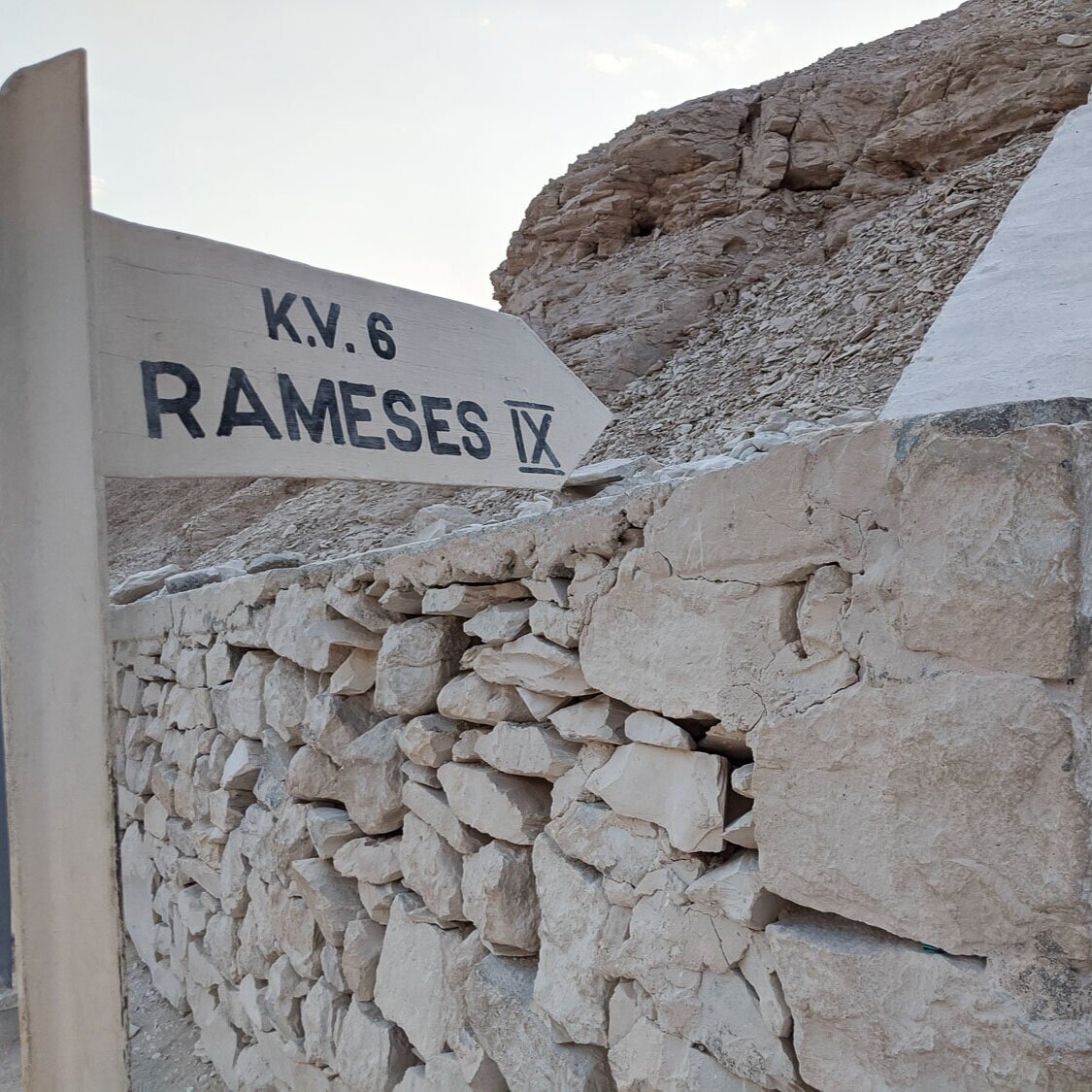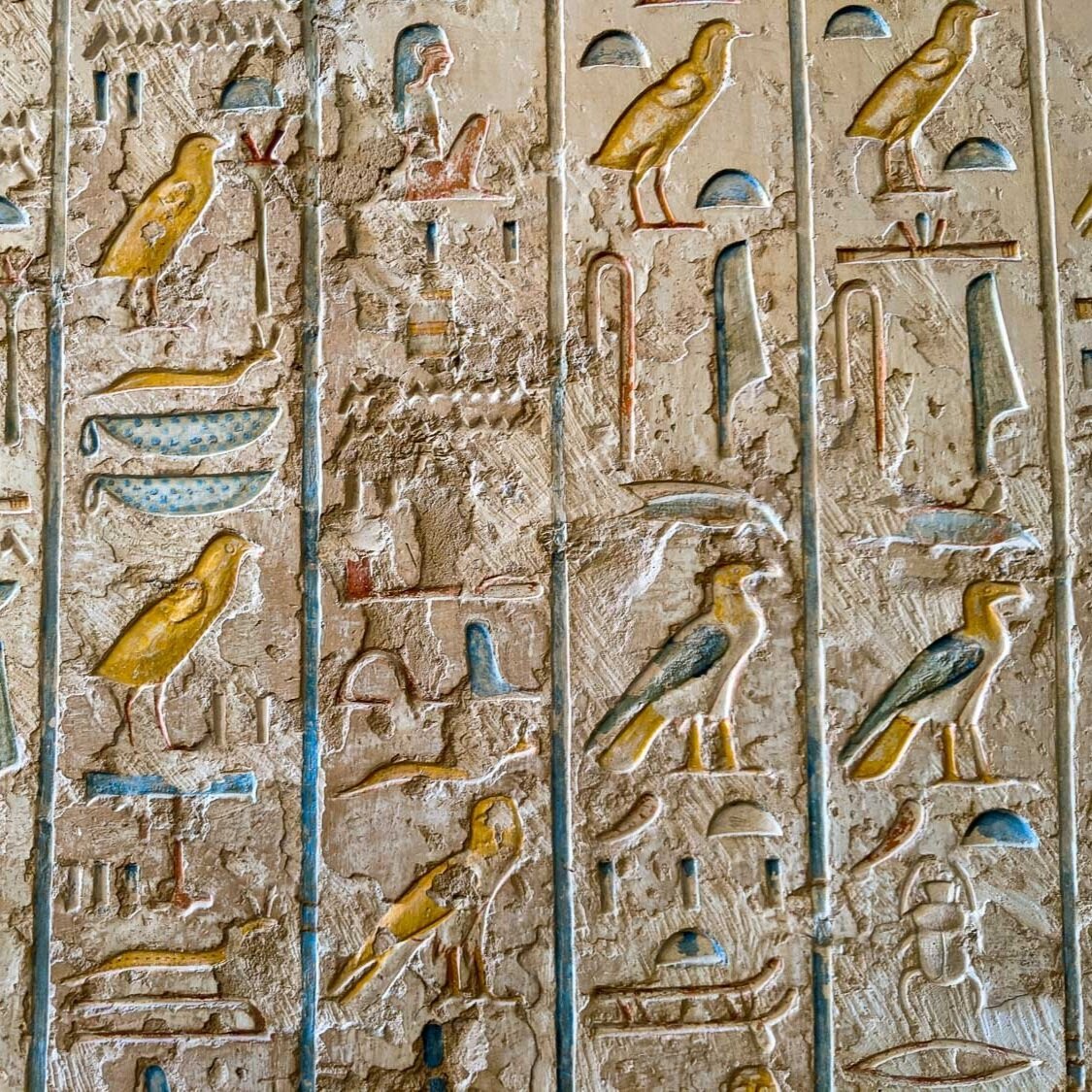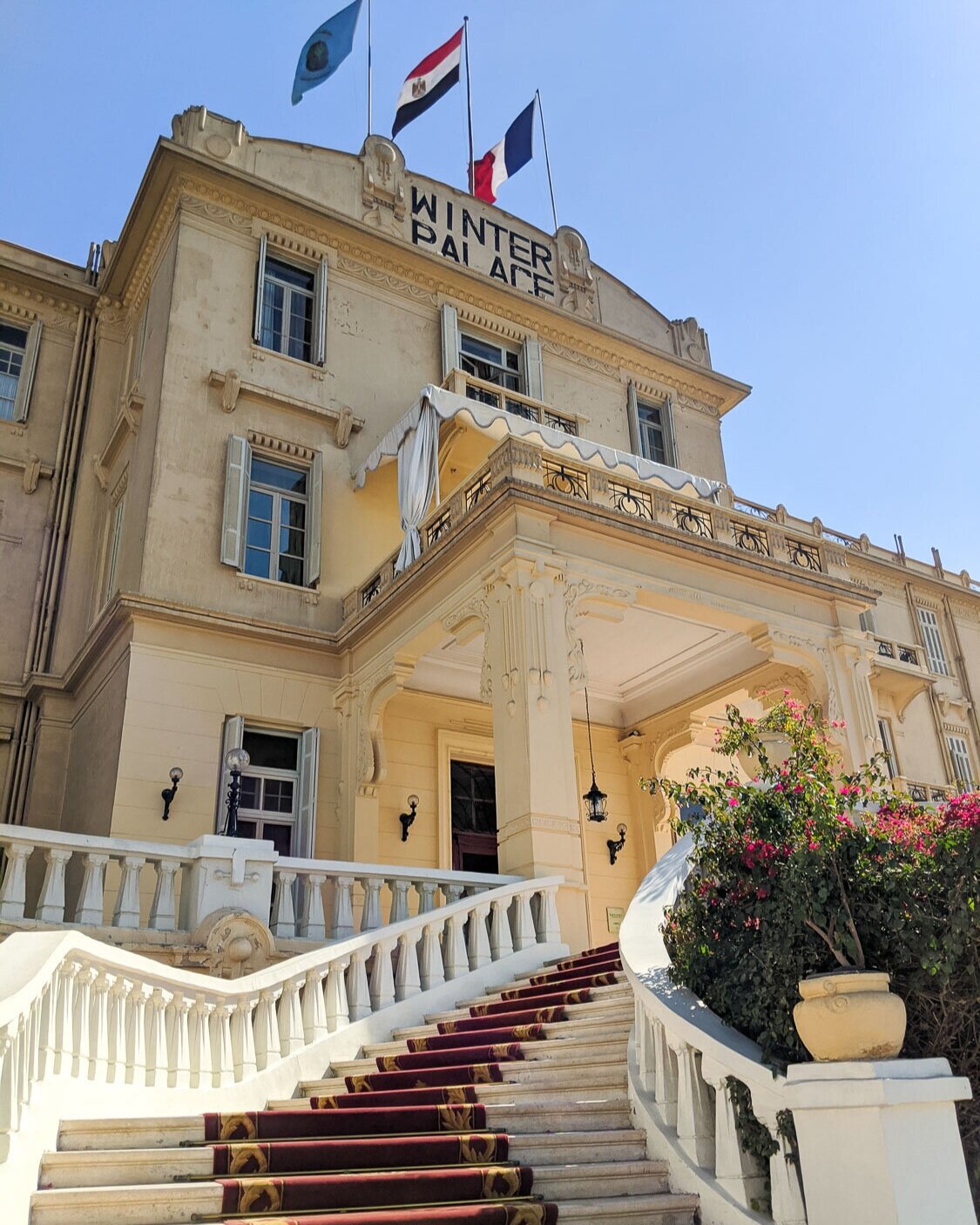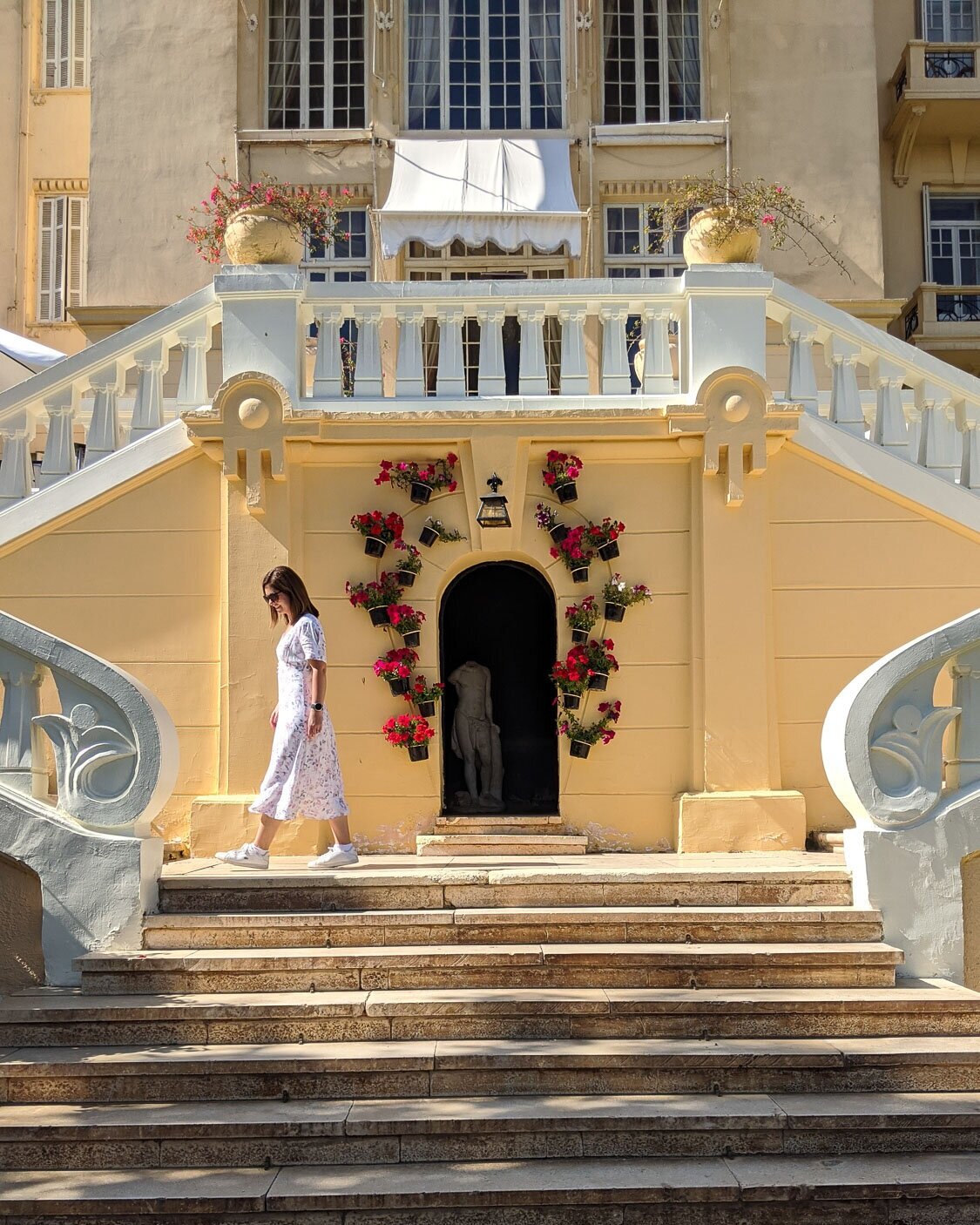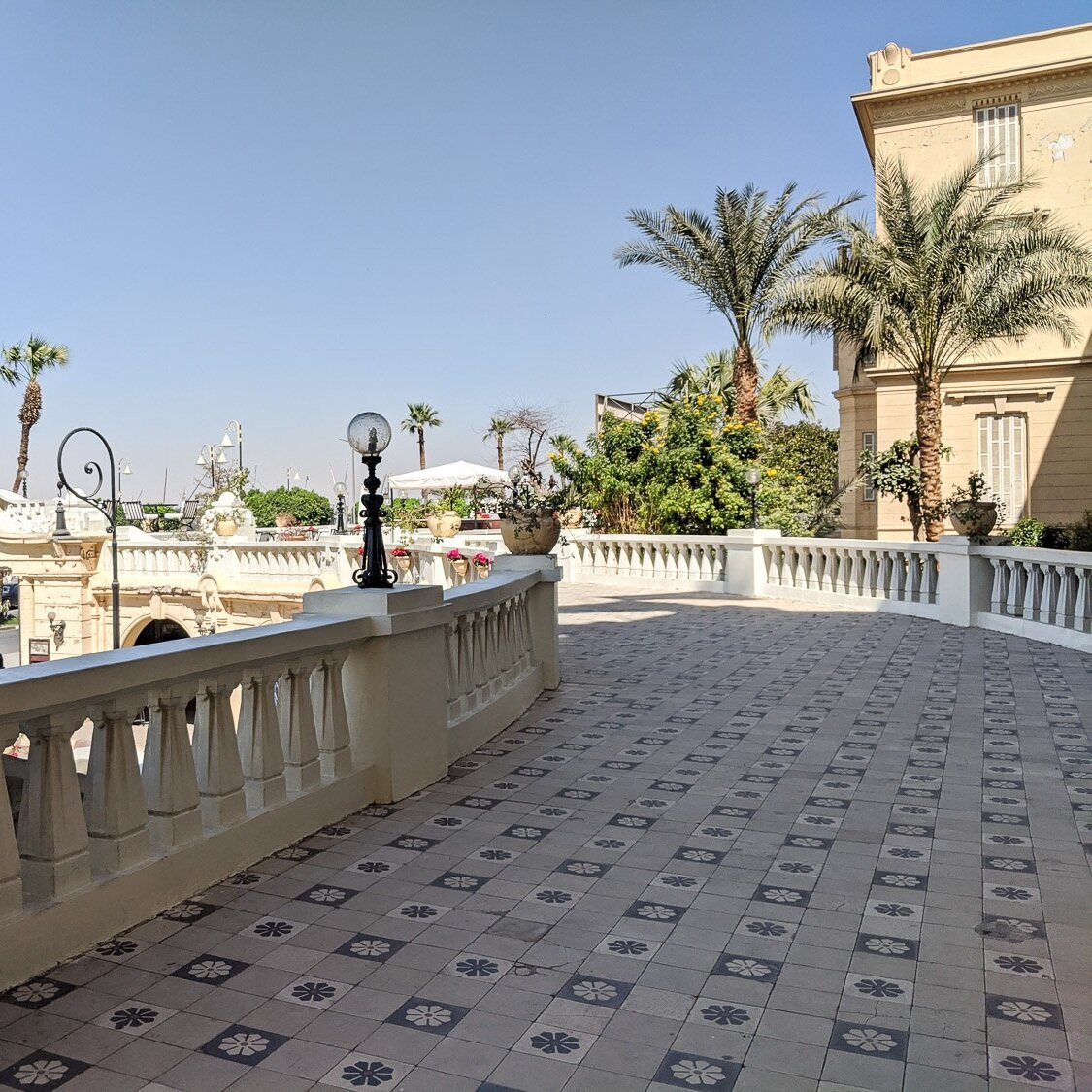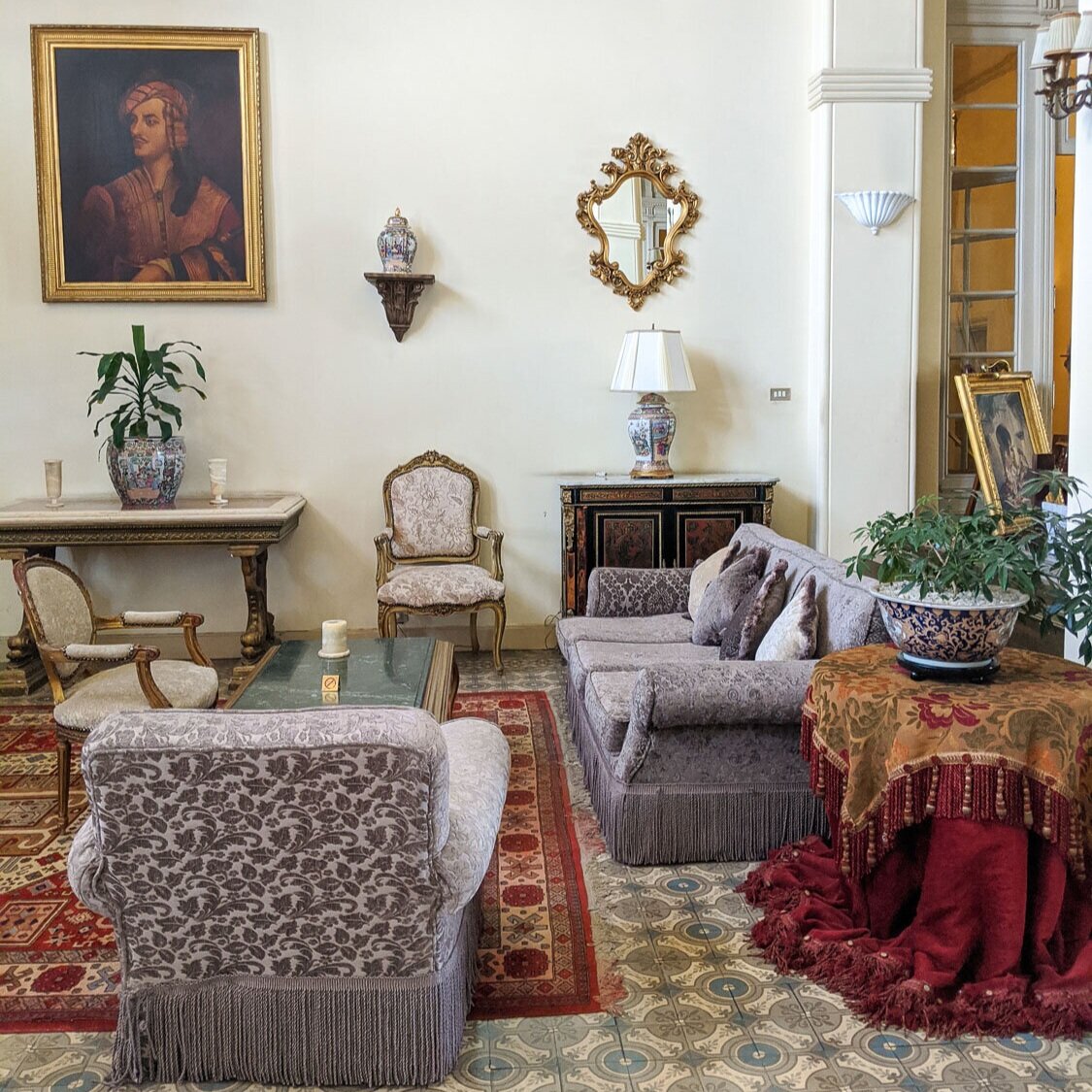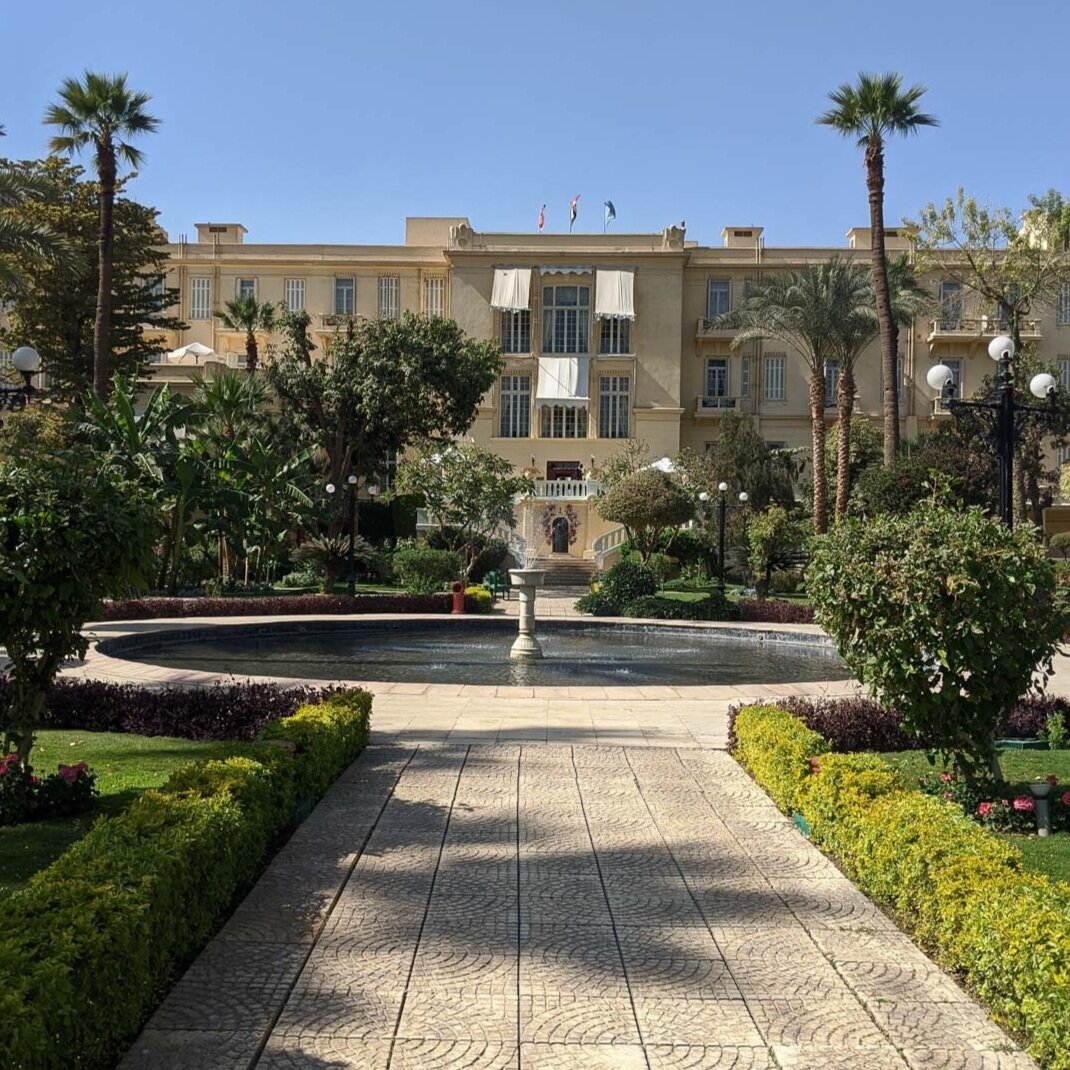Egypt
I know I refer to a lot of places we visit as being ‘on the list’. But if we were to talk true bucket list destinations then Egypt has to have been at the top of that list.
About 3-4 years ago we looked at Egypt and seriously considered going, however there was still political instability in the country and the odd terrorist attack and so we shelved it for a while longer. But mid-last year when we were planning future coming trips, Egypt finally felt like a ‘go’ and so we booked it in.
Then to the itinerary. Because there are so many historic sites in Egypt and they are quite spread out we struggled to come up with a plan and certainly one that was easy to execute. We are not tour group people and we spent months fighting what appeared to be the easiest way to do it. We tried re-creating tour itineraries and honestly, I think it can be done if you have a bit of time to spend on the planning and booking processes, but time is something we’re generally quite poor in and so after months of indecision we capitulated and booked ourselves on a tour.
The company we chose was G Adventures as they have a number of tours in Egypt. We were looking for something that was just short of 2 weeks and covered as much ground as possible, leading us to choose the Egypt Upgraded tour. The tour went for 12 days, although the first and last days were really nothing days that you could use how you chose. We also added a day to see some more of Cairo, not something we’d generally recommend, but more about that below. The other thing we liked about G Adventures was that the guide is a qualified Egyptologist, something that is difficult to access when organising the trip on your own.
For this post I haven’t broken it down on a day by basis but rather location. However if you are interested in the itinerary we followed, or the hotels we stayed in, please refer to the Egypt Upgraded itinerary for further details.
We’ve also provided some final thoughts and potential tweaks you could make towards the end of this post should you want to use the itinerary as a base for your own trip. But for now, let us show you Egypt!
Cairo
Our time and tour in Egypt started and ended in Cairo and we had added a day at both ends.
Cairo is massive and has a population of around 20 million people when you include the ‘greater Cairo’ area. Like any city of this size it suffers from traffic gridlock and high levels of pollution. Also evident when getting around Cairo are the low income levels. But the people are generally nice and very willing to help tourists.
As we knew that the Pyramids and Museum would be covered on our tour we decided to check out other parts of the city. Our hotel (the one designated by G Adventures) was located in Giza. It turns out the hotel was great for seeing the pyramids but not seeing anything else as it is quite a way out of the city.
We spent a good part of one of our free days checking our Khan el Kalili and surrounds. Khan el-Khalili is an ancient bazaar adjacent to the Al-Hussein Mosque.
In the bazaar we wondered around checking out the many treasures for sale and drinking Egyptian coffee.
On a different day we took an Uber to the Egyptian Museum and went for a walk around the local neighbourhood. We then walked across to Gezira Island via the Qasr al-Nil Bridge. As a side note we had planned to look around Tahrir Square, the centre of the Arab Spring protests, but were advised to come on a different day by a local man. We were there on a Friday (day of prayer) and he told us that Friday’s can get a bit ‘political’ and didn’t want us to get caught up in anything. He said it was ‘safe’ just better to come back on a different day.
Gezira Island felt like a more ‘upmarket’ area with its sporting clubs and embassies. We did a lot of walking on the island, walking from one end to the other, via the Cairo Tower (we didn’t go up the tower). At the other end and after many hours of walking we had a late lunch at Left Bank, a cozy cafe with delicious food and a beautiful view of the water.
The rest of Cairo we saw on our tour.
Our tour started with the Pyramids of Giza. Given the close proximity to our hotel, we arrived there early and listened to the history of the pyramids from our guide and Egyptologist Sa’id before having time to go for a wonder and take a ton of photos.
The pyramids are amazing and I had to keep pinching myself to believe we were actually there. That said, they were actually not the most amazing site we visited in Egypt and we were a little disappointed to see how close the city gets to the site with new buildings and housing estates starting to encroach on the sandy area.
We also paid for entrance to the Great Pyramid to see what was inside (you could also pay for entrance to the second pyramid). Inside the Great Pyramid it was very crowded and if you are claustrophobic I’d strongly advise against going in there as the descending passage is extremely narrow and dark. We did make it to the centre but truthfully I was really glad to get back out. Others in our tour did the second pyramid and if we were to do this again we would definitely go for the smaller pyramid where entrance was cheaper and there were less people.
Following our inspection of the pyramids we wondered down to see the Sphinx. Again the experience felt a little surreal after seeing this structure so many times in photos and documentaries but it is smaller than I’d expected.
One tip and it is a kind of an obvious one - get to the Pyramids and Sphinx as early as you can. We actually made a return visit on our final day in Cairo as we wanted to try and get photos without all of the people, and we were mostly successful as most tourists and groups start at the Great Pyramid and spend quite a bit of time there before moving to the other monuments. We definitely felt it was worth the return visit.
The Egyptian Museum in central Cairo was amazing for the amount of pieces it holds and based on what our guide Sa’id explained, the public only ever see a fraction of everything that gets stored there. That said, while we were there a lot of work was under way to move major pieces to the new Grand Egyptian Museum located in Giza. This new museum was still under construction when we were there, but judging by its size, it looked like it would be easy to spend a whole day there.
For the existing museum, I would note that without our guide this museum would be very difficult to make sense of. There are so many pieces on display, most without any explanation. We spent a couple of hours with our group and Sa’id before having another couple of hours on our own to explore, including a visit to the Mummy Rooms where for a small additional cost you can view the ancient remains of some of Egypt’s most important rulers. Truthfully I found those rooms a little creepy but glad we checked them out all the same.
The (existing) museum should take a half day visit but do try and get a guide to take you through it before exploring yourself in order to get maximum value and appreciation of what you will see.
Alexandria
Not actually in Alexandria, but on our way from Cairo to Alexandria, we stopped by St Bishoy Monastery in Wadi El-Natrun.
This monastery is the most eastern surviving Christian monastery in the Wadi el-Natrun and the most famous of the Coptic Orthodox Church of Alexandria and was found by St. Bishoy (hence the name).
The monastery is amazing and dates back to the 4th century. It is made up of five churches and clearly a very special and sacred site for Coptic Christians in Egypt.
In Alexandria itself we were greeted by freezing cold temperatures and winds. Winter had definitely hit the city.
Alexandria is Egypt’s second largest city but felt quite different from Cairo with its Mediterranean location. Even the buildings and streets felt old (and run down) Europe, more than the Arab feel of Cairo.
In Alexandria our tour got very ‘touristy’, visiting a number of key sites.
We started with the Catacombs of Kom El Shoqafa which date back to the 2nd century AD. The catacombs seemed to merge Roman, Greek and Egyptian styles and apparently after not being used since the 4th century were rediscovered in in 1900 when a donkey accidentally fell into the access shaft.
Our visit to the catacombs was followed by a visit to the close by Pompey's Pillar, a Roman triumphal column and one of the best-known ancient monuments still standing in Alexandria today. We learned that the name "Pompey's Pillar" is actually a misnomer, as it has nothing to do with Pompey, having been erected in 293AD for Emperor Diocletian.
Next we took a look at the new Library of Alexandria, The Bibliotheca Alexandrina. The library was inaugurated in 2002 near the site of the old Royal Library of Alexandria, what had once been the largest library in the world. That said, the new library was pretty impressive in its own right.
We also made a visit to the Citadel of Qaitbay, a 15th-century defensive fortress located on the sea coast. Another impressive structure, the citadel, was erected on the exact site of the Lighthouse of Alexandria and has undergone significant restoration work after years of damage and neglect. We enjoyed the sea view, restaurants and coffee shops that line the street up to the fortress.
While in Alexandria we also had a bit of a birthday celebration for me!
Next door to our hotel was what our guide described as a ‘dodgy bar’ but good for a drink close by. So that is what we did at ‘The Spitfire Bar’, enjoying a couple of cold Sakara beers, followed up by a seafood dinner at the Fish Market Marina where you can select your piece of fresh fish from the display.
Aswan
A day or two later we flew south to the Southern city of Aswan which had a much warmer climate than the two cities up north.
Aswan felt a lot more like Africa so we immediately loved it. The city centre itself is small enough to walk around and we enjoyed leisurely walks around the city and market with the beautiful Nile in the background. Aswan felt much slower and relaxing than where we had just come from.
The highlights of Aswan were visits to Philae Temple, dinner in a Nubian Village, the felucca trip to the Nubian village and strolling the market.
Philae Temple (pictured above) is located on Agilkia Island, although this was not it’s original location having been moved (yes moved!) from another island in the reservoir of the Aswan Low Dam, downstream of the Aswan Dam and Lake Nasser. The area had been flooding since the construction of the Aswan Low Dam in 1902 and in the 1970s a UNESCO ‘rescue mission’ took place to move the entire temple to its new home on Agilkia Island. The thought of moving a whole temple blew our minds… until we saw Abu Simbel (further below) where they had done a similar thing.
The boat trip to Philae Temple was lovely and the temple amazing, albeit very crowded by the time we got there.
The visit to the Nubian village started via a felucca trip on the Nile River, taking us up and across the river to a couple of pick up trucks.
On the water we had views of the Aga Khan Mausoleum and Kitchener Island and enjoyed the sun.
In the Nubian village our trucks drove us through the village, always with the Nile not far away, before having dinner. This was the kind of thing that would be difficult to organise outside of a tour.
Abu Simbel
Our stay in Aswan was also used as a base for Abu Simbel, as well as the Nile River Cruise (more on that further below) and I have provided our thoughts on this in the itinerary section below.
Abu Simbel was the site we were most looking forward to and I have to say that it did not disappoint. It is incredible!
We left for Abu Simbel from Aswan at 4:00am so we could get there by around 9am (it’s about a 4 hour trip). The road to Abu Simbel from Aswan doesn’t open until 5am but we actually ended up sitting waiting for the road to open for at least 20 minutes. There were a ton of buses waiting with us and although the road is now considered safe (it wasn’t 5-6 years ago) the Egyptians seemed to still be keen to move in a convoy.
The trip to Abu Simbel is consistent desert the whole way and was quite pretty as the sun began to rise. But I must admit I slept most of the way there, minus a quick coffee/toilet break.
There are two temples at Abu Simbel both built by Ramses II between 1274-1244BC: the larger temple, The Great Temple (pictured above), and the temple of Hathor and Nefertari, also known as the Small Temple.
As alluded to earlier, the Abu Simbel temples are another site rescued from flooding with the help of UNESCO in the 1960s, this time from the construction of the Aswan High Dam. Without this rescue the temples would today be under Lake Nasser.
The temples are incredible and you can find out more about their construction and history here.
In terms of actually viewing and photographing them, when we arrived sometime after 9am there were a ton of people just like us who had arrived on bus tours. We then spent about 30 mins or so listening to our guide who gave us the history, a huge positive about being on a tour. Then the negative to being on a tour, we wanted to take photos at the same time as everyone else and it was chaos in and outside the temples as we got in peoples photos and they got in ours. So here is a hint: have a look around the temples and take them both in and then sit outside in the sunshine and just wait. At about 10:30am everyone starts to slowly leave and you can get good photos minus the crowds. Our tour guide had agreed to hold back an extra 15 mins so we could do that and it’s definitely the only way we could get the photos we did with the itinerary we were on. And as an added bonus we had time in between to really enjoy the temples.
Nile Cruise
Back in Aswan we boarded our accommodation for the next few nights, a river boat on the Nile.
There were at least a dozen boats lined up ready to take tourists. It really is a well oiled machine with boats ready to go, groups of tourists directed to their boat, their luggage already on the way to their room. We are not cruise people (at all) but this was kind of exciting. Chilling out in our room or on the rooftop while floating down the Nile River was a calming experience and we got to see some very pretty parts of Egypt.
The boat also acted as a moving hotel. The first evening we stopped at the Temple of Kom Ombo (pictured below).
The temple was partially dedicated to the crocodile god Sobek and next to the temple is a Crocodile Museum where you can still see the remains of an ancient crocodile mummies discovered in the vicinity, but the temple was definitely the highlight of that stop.
Luxor
The river boat moved slowly to Luxor where we docked for a further 2 nights, the boat as our base.
Luxor offered some of the sites we were most looking forward to. The first being the Valley of the Kings.
We left the boat early in effort to beat the crowds, seeing the morning hot air balloons in the sky. When we arrived we were the first group there.
Valley of the Kings works in a funny way where they have about 6-10 tombs open at any one time/day and your pass gives you access to your choice of three. You can then pay for additional tickets to select tombs, e.g. Tutankhamun. Because we had an Egyptologist guide with us he chose the best three for the day and gave us the run down. Only one person in our entire group paid to see the Tomb of Tutankhamun and was actually disappointed with what he saw.
The tombs we went into were: Ramesses IX, Ramesses III and Merenptah.
The tombs were amazing and in excellent condition. It was difficult to remember at times what the tombs were built for as we studied the most incredible paintings and decorations.
From the tombs we travelled not too far to the Temple of Hatshepsut which as you approach it appears to rise out of the surrounding limestone rock.
Hatshepsut was one of the few female pharaohs from the ancient kingdom and despite her power in life, her son systematically destroyed all evidence of her legacy by crushing her statues and erasing her cartouche (a hieroglyphic name plate). Nonetheless, the temple has since been restored and was packed with school groups as eager as us to see it.
Next up was a quick stop at the Colossi of Memnon, two huge stone statues of the Pharaoh Amenhotep III who reigned in Egypt during the Dynasty XVIII. Both statues have extreme damage and are the little that remains today of Amenhotep's temple, destroyed by in earthquake in 1200 BC.
Our group used the statues as a photo opportunity to ‘walk as an Egyptian’.
Off the boat and now in hotel accommodation just outside of the Luxor city centre, we continued to explore Luxor and the surrounding area.
Karnak Temple was next on our itinerary.
Karnak Temple is huge, having been built by successive generations of rulers. Construction at the complex began during the reign of Senusret I in the Middle Kingdom (around 2000-1700 BC) and continued into the Ptolemaic period (305 - 30 BC), although most of the surviving buildings date from the New Kingdom.
For me personally, Karnak Temple was one of the highlights of our trip to Egypt. You could spend many hours at this site wondering around and enjoying the amazing architecture, massive columns and painted hieroglyphs. And because the site is so big, even with the crowds it was still possible to get a nice photo with a little bit of patience.
Luxor Temple was a much smaller site than Karnak, but still impressive.
The temple is located on the banks of the Nile and right in the centre of downtown Luxor. Like Karnak it consists of several temples, built be successive rulers.
It has been used as a place of worship all the way from its conception in 1390 BC to present day with an active mosque still located within the temple.
Luxor Temple, like Karnak, gets incredibly crowded. I guess its central position in town and close proximity to the Nile river boats adds to its popularity. So like a lot of sites in Egypt, try and get there early to enjoy it without the crowds.
We had a bit of time to also check out the Luxor city centre.
Luxor has a bustling local bazaar where you can pick up gifts and souvenirs. We had a bit of a look around but were quite limited on packing space so it really was mostly just a look.
One place that we did buy from was Moses Jewelery, good for silver jewelery. I got a silver Cartouche with my name and the owner put a rush on it as we were leaving early the next morning
Not too far from the bazaar and Luxor Temple is the Winter Palace, a five star hotel with British colonial-era buildings, surrounded by beautiful landscaped gardens.
Even for those of us not fortunate enough to be staying there, a visit to the hotel grounds for a drink or cup of tea is still enough to lap up a bit of the luxury the hotel offers and get away from the hectic Luxor city streets.
Itinerary thoughts and tweaks
We couldn’t finish this post without giving our thoughts on the itinerary that we and our tour followed.
For a start we would limit the time we spent in Cairo. While you definitely need to spend some time in Cairo, if for no other reason than to see the Giza Pyramids, it is just a big, chaotic city. It is difficult to get around, crowded and quite dirty. We were pretty annoyed we had actually added a day!
Also, our tour accommodation put us in Giza which wasn’t great for getting around, so maybe look more central if staying there longer than just to see the pyramids. A further tip: use Uber to get around. It’s extremely reliable, we felt safe (well as safe as you can in Cairo traffic) and there was no messing around with money, prices and haggling.
The next thought we had is in regards to visiting the city of Alexandria.
We liked Alexandria and there are some great things to see however we would recommend against going in the cooler months as it’s actually quite hostile to walking around. As a coastal city it would definitely be much nicer in the warmer months. Uber also worked well in Alexandria.
Down south is where most of the cool stuff to see is.
To get to southern Egypt we went by plane, as opposed to bus or train, flying Nile Air one way and EgyptAir the other. Both airlines were good when we flew them, on time and fairly efficient. I know bus or train would be cheaper, but if you are strapped for time and also as a DIY option where you can book online, flying works well.
What I would do differently from our tour itinerary, is fly to Abu Simbel as opposed to Aswan, stay for a night in Abu Simbel so that you can see the temples early before the crowds, and then arrange a transfer to Aswan. I don’t know about organising buses in one single direction although, in my experience, Egyptians always find a way to make things happen for a fee. Your other option is to fly from Abu Simbel to Aswan, a short (and from my understanding), fairly inexpensive flight. That way you can enjoy the town of Aswan for a night or two and continue to use it as the starting point for the Nile River Cruise.
Luxor was a great place to see a lot. We had two full days there which was probably spot on.
One thing we didn’t do and regretted later was to visit Saqqara and Memphis. Saqqara is the site of Egypt's first pyramid and we had the option of doing it on the final day of our tour but opted against it in order to get some rest (I wasn’t feeling well at this stage). However others in our group did do the day visit and it looked pretty awesome, so something worth looking into as a day trip.
If we had extra days another thing that would be great to build into an itinerary would be the southern coast of Egypt, known for snorkeling and diving opportunities, e.g. Wadi EL Gemal National Park, Hurghada, etc.
There are also places such as Sharm el-Sheikh, although Australian Government directives on where is safe to travel impact such itinerary decisions.
Final word
Obviously when you chose a group tour provider you are tied to a very specific itinerary and there’s always going to be some hits and misses. We were lucky in that it was mostly hits but as you can see, there were definitely some things we would change if we were do this trip again/ourselves.


